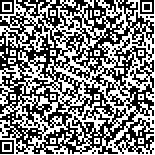下载中心
优秀审稿专家
优秀论文
相关链接
摘要

遥感影像解译是一个不断发展的研究方向,随着日新月异的遥感应用需求、高分辨率遥感数据的快速发展、地理知识的日积月累、以及人工智能技术的发展,亟需发展自动化、智能化的遥感影像解译技术。本文针对遥感影像智能解译,首先从遥感影像解译单元、分类方法、解译认知3个方面阐述遥感影像解译的研究进展,然后提出了面向地理场景的 “地理知识图谱构建—深度学习模型构建—地理知识图谱与深度学习模型协同的遥感影像语义分类”遥感影像智能解译总体框架,并给出初步试验成果,最后对智能解译的重要发展趋势予以展望,以期拓展遥感影像智能解译研究的思路与方法,提高遥感影像智能解译的精细程度和智能化水平,使智能解译具备地理空间理解能力,推动“数据—信息—知识—智能”的深度转化。
Remote sensing imagery interpretation is a continuously developing research direction. With the ever-changing needs of remote sensing applications, the rapid development of high-resolution remote sensing data, the accumulation of geographic knowledge, and the development of artificial intelligence, automated and intelligent classification technology should be urgently developed. This paper aims at the development of intelligent interpretation. First, the research progress is elaborated from three aspects: interpretation unit, classification method, and interpretation recognition. Then, a geographic scene-level overall framework for intelligent understanding of remote sensing imagery is presented. The framework includes geographic knowledge map construction, deep convolutional neural network model construction, and the semantic classification method based on geographic knowledge graph and deep learning model. The preliminary test results are provided. Lastly, the important development trend of intelligent understanding is projected. A geographic knowledge graph can realize formal description and reasoning calculation of geographic knowledge and improve the learning capability and the utilization rate of prior knowledge. Classification and related semantic information can also be obtained, which is helpful for in-depth cognition of geographic scenes. This study looks forward to expanding the ideas and methods for intelligent interpretation of remote sensing images and improving its fineness and intelligence. Intelligent interpretation can understand geospatial capabilities intelligently and promote in-depth transformation of data, information, knowledge, and intelligence.

